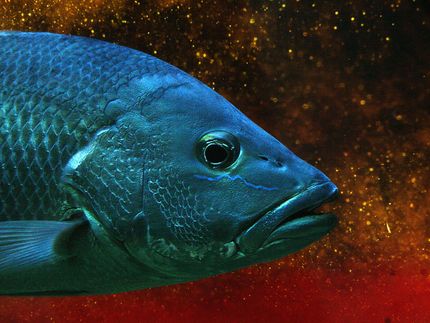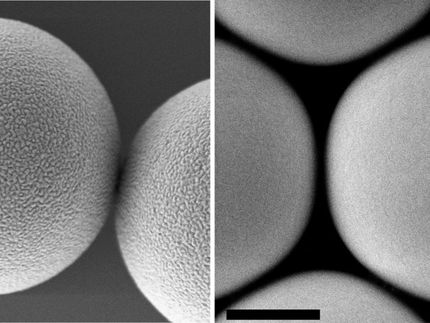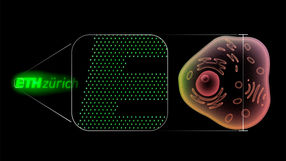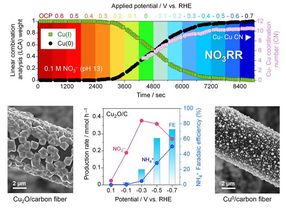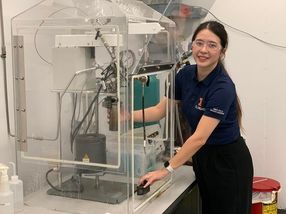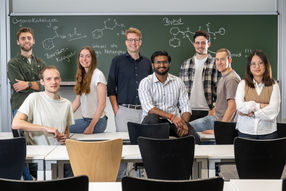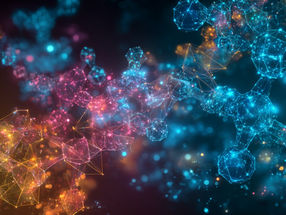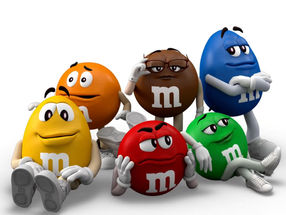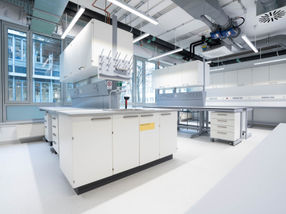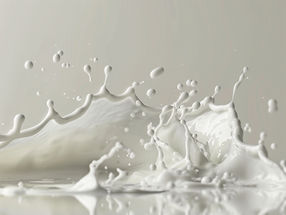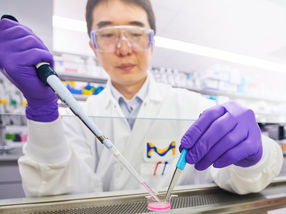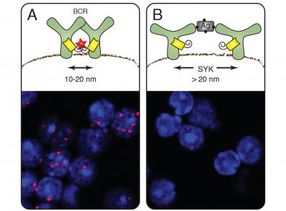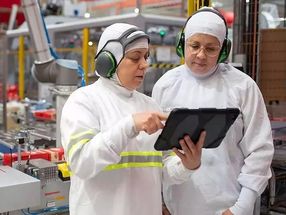Nanoplastics detected in animal cells
Study warns of possible consequences for animal health, meat production and human food safety
Advertisement
Researchers at the Research Institute for Farm Animal Biology (FBN) in Dummerstorf and the University of Udine have detected the uptake of nanoplastics in farm animal cell cultures. The results provide evidence of potential risks to animal health, meat production and also human food safety.
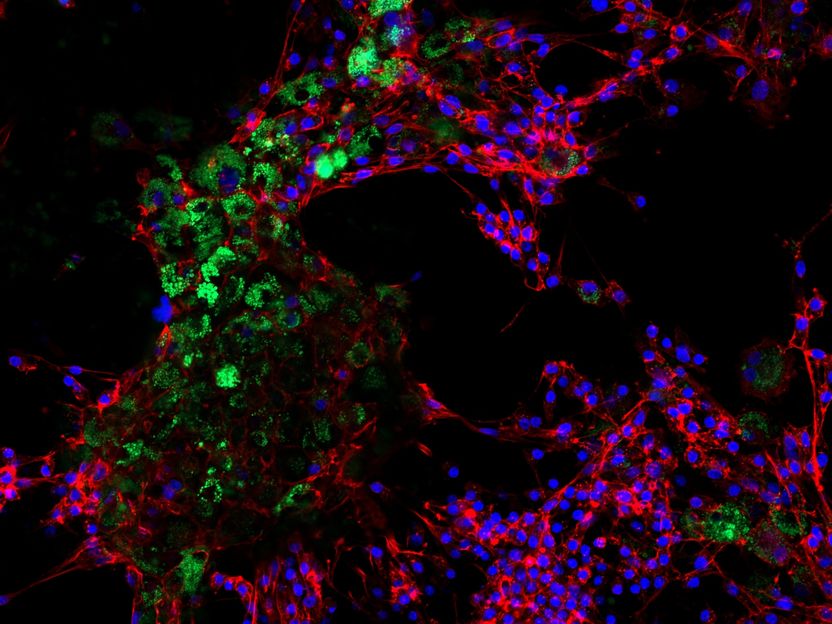
Granulosa cells from bovine ovaries after eight days of contact with nanoplastics particles. The fluorescent polystyrene particles (100 nm) show how the cells absorb the nanoplastics.
FBN
Plastic bags, packaging, yoghurt lids – items that are carelessly thrown away decompose over years into tiny plastic particles. They end up in soil, waterways and ultimately in our food chain. Although numerous studies have already shown that microplastics can harm marine animals, birds and insects, the effects of nanoplastics on livestock have hardly been researched to date.
Unlike microplastics (1 µm – 5 mm), there are currently few adequate methods for detecting nanoplastics (< 1 µm) in humans and animals. However, researchers assume that these small particles can also accumulate in tissue.
FBN study: Nanoplastics enter livestock cell cultures
In a joint study, researchers from the FBN and the University of Udine have demonstrated that nanoplastic particles made of polystyrene are uptaken into cultured cells from cattle and pigs. This absorption led to changes that could impair the cell function and health of the animals in the long term.
"Since we still know far too little about nanoplastics and detection is difficult, our results are particularly important for better assessing the risks," explains Dr Anja Baufeld from the Cell Physiology and Reproduction working group at the FBN. "When we saw that nanoplastics were entering the cells, we knew that this could have far-reaching consequences," Baufeld continues.
Possible consequences for fertility and meat production
The study examined granulosa cells from cattle, which play an important role in reproduction, and myoblasts from pigs, which are used to form muscle tissue. Even low concentrations led to microscopically visible accumulations. These could impair the fertility of the animals and their products.
Risks to humans cannot be ruled out
Farm animals are part of the human food chain. Direct health risks to consumers cannot be inferred at present. Nevertheless, the researchers urge for more detailed investigations into the long-term consequences of microplastics and nanoplastics.
"Our research shows that nanoplastics are not only an environmental problem, but could also have direct consequences for the health of farm animals. These initial findings highlight the importance of conducting more intensive research into plastic pollution in order to assess the potential risks to both animals and humans at an early stage," says Baufeld.
The study was published in the journal Science of The Total Environment. It forms an important basis for better understanding the effects of nanoplastics on animals – and minimising potential risks to the environment and humans. Dr Anja Baufeld has also investigated the effects of microplastics and nanoplastics in other studies, including a review of the potential risks to ruminants as an important component of the human diet (Animals 2024, 14(2), 350) and their effects on reproduction and animal health in general (Animals 2023, 13(7), 1132).
The Research Institute for Farm Animal Biology will continue to conduct intensive research into plastic pollution and its effects on farm animals in the future.
Original publication
Francesca Corte Pause, Anja Baufeld, Susy Urli, Martina Crociati, Giuseppe Stradaioli, Jens Vanselow, Claudia Kalbe; "Exploring the influence of polystyrene-nanoplastics on two distinct in vitro systems in farm animals: A pilot study"; Science of The Total Environment, Volume 976
Francesca Corte Pause, Susy Urli, Martina Crociati, Giuseppe Stradaioli, Anja Baufeld; "Connecting the Dots: Livestock Animals as Missing Links in the Chain of Microplastic Contamination and Human Health"; Animals, Volume 14, 2024-1-22
Susy Urli, Francesca Corte Pause, Martina Crociati, Anja Baufeld, Maurizio Monaci, Giuseppe Stradaioli; "Impact of Microplastics and Nanoplastics on Livestock Health: An Emerging Risk for Reproductive Efficiency"; Animals, Volume 13, 2023-3-23




